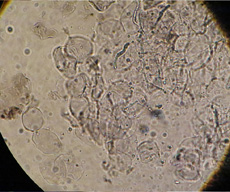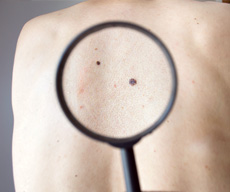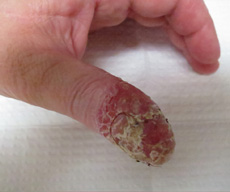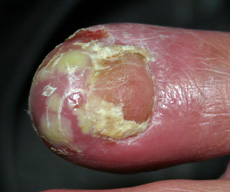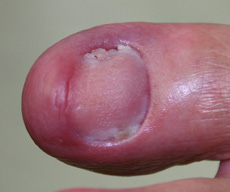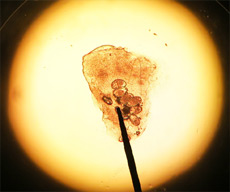 |
Call Us Today at 585-364-1177 |
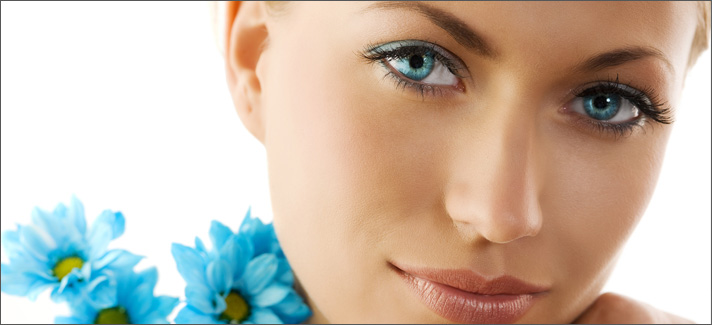 Services Click on a topic below to learn more:
General Dermatology Acne is the term for the blocked pores (blackheads and whiteheads), pimples, and deeper lumps (cysts or nodules) that can appear typically on the face, neck, chest, back, shoulders and upper arms. Seventeen million Americans currently have acne, making it the most common skin disease in the country. Acne is not life-threatening, but it can cause physical disfigurement (scarring) and emotional distress. Treatment for acne varies depending on the type and severity of lesions, as well as the patient's skin type, age and lifestyle. Options include: • Topical Medications • Antibiotics • Accutane • Blackhead Extraction • Microdermabrasion • Photodynamic Therapy • Skin Care • Blu-U Light Treatments • Laser Treatments Click here for more information on Acne » Dandruff is a chronic skin disorder that causes itching and flaking of the scalp. Dandruff is believed to be caused by a yeast-like fungus in the scalp called malassezia. Malassezia is found in most people, but large amounts can cause irritation and result in a dry, itchy scalp and flakes of oily, dead cells. Mild cases of dandruff can usually be managed with an over-the-counter dandruff shampoo. More stubborn cases may need a prescription-strength shampoo. Although dandruff is chronic, it can be controlled by managing stress, shampooing often and cutting back on styling products. Click here for more information on Dandruff » Dry skin is a common condition that can develop as a result of certain skin diseases like psoriasis or environmental factors such as cold weather, hot showers, harsh soaps and sun exposure. Patients with this condition often experience skin that feels rough, tight and may be itchy or red. For most, this is only a temporary problem and can be managed through simple home and life measures, including using moisturizers and special creams or avoiding hot showers and baths. For more severe cases, prescription creams and ointments may be recommended to calm skin. Click here for more information on Dry Skin » Eczema is a group of inflamed skin conditions that result in chronic itchy rashes. About 15 million people in the U.S. suffer from some form of eczema, including 10-20 percent of all infants. Symptoms vary from person to person but often include dry, red, itchy patches on the skin which break out in rashes when scratched or exposed to certain triggers. Treatment involves the restriction of scratching, use of moisturizing lotions or creams, cold compresses and nonprescription anti-inflammatory corticosteroid creams and ointments. If this proves insufficient, physicians may prescribe corticosteroid medication, antibiotics to combat infection, or sedative antihistamines. Click here for more information on Eczema » Fungal infections are common skin conditions that may cause redness, itching, burning and scaling. They can also cause blisters or peeling. Fungus can grow anywhere on the body, but tends to develop in warm, moist areas such as the feet, groin and armpit area. Common types of fungal infections include athlete's foot, jock itch, ringworm and yeast infections.
Fungal infections can usually be successfully treated with antifungal oral or topical medications. They are not usually serious, but may be contagious, so treatment is important. Keeping the body clean and changing socks and underwear everyday can help prevent fungal infections. Click here for more information on Fungal Infections » Hair Loss can occur as a result of aging, heredity, medications or an underlying medical condition, and can affect men and women of all ages. It may leave you with pattern baldness, patchy spots or thinned hair. Some patients may also experience excessive hair shedding, a condition known as telogen effluvium. Most people are troubled by this undesired change to their appearance. The best treatment option for hair loss depends on the location and extent of the hair loss, but may include hair growth medications, wigs and hairpieces, and hair transplant or scalp reduction surgery. Click here for more information on Hair Loss » Moles and other birthmarks are benign pigmented spots or patches of skin that range in color from tan, brown and black (moles) to red or pink. Though most birthmarks are harmless, they may develop into cancer. Moles exhibiting any of the following warning signs should be examined by a professional immediately:
Click here for more information on Moles » Nail Disorders – There are several different diseases that affect the nails, often as a result of a fungal or bacterial infection. Ingrown toenails are the most common nail ailment, involving the corners of the nails digging into the surrounding soft tissue, causing irritation and swelling. Fungal infections commonly affect the toenails (and sometimes the fingernails as well), as a result of exposure to a warm, moist environment, and cause thick, brittle and distorted nails. Treatment for nail diseases may include oral or topical medications. The nail may need to be removed for severe infections. Patients can prevent nail conditions from developing by keeping the feet clean and dry, wearing shoes that fit well and clipping toenails straight across. Click here for more information on Nail Disorders » Psoriasis is a group of chronic skin disorders that cause itching and/or burning, scaling and crusting of the skin. Over seven million men and women in the U.S. of all ages have some form of psoriasis, which may be mild, moderate or severe. The most commonly affected areas are the scalp, elbows, knees, hands, feet and genitals. Psoriasis cannot be cured but it can be treated successfully, sometimes for months or years at a time and occasionally even permanently. Treatment depends on the type, severity and location of psoriasis. The most common treatments are topical medications, phototherapy, photochemotherapy (PUVA), and oral or injectable medication (for severe symptoms). Click here for more information on Psoriasis » Skin cancer refers to the abnormal, uncontrolled growth of skin cells. One in five people will develop skin cancer in their lifetime, according to the American Academy of Dermatology. Risk factors include pale skin, family history of melanoma, being over 40 years old, and regular sun exposure. Fortunately, skin cancer is almost always curable if detected and treated early.
Skin growths are non-cancerous bumps that appear on or below the surface of the skin, which may include seborrheic keratoses, lipomas, neurofibromas, cysts and others. These growths are usually small and round, may be hard or soft, and are sometimes painful. They may be caused by an infection, blocked hair follicle or may be hereditary.
BOTOX® injections are relatively painless, as the needle used is significantly smaller than those used for other injectable fillers.
The best candidates for BOTOX® are men and women seeking an enhanced appearance with fewer wrinkles. In addition, it is important that those seeking treatment are in good physical health, are not pregnant or nursing, and do not have a neuromuscular disorder. People seeking BOTOX® injections should have realistic expectations regarding this procedure's abilities and should discuss their desired goals with their doctor beforehand. BOTOX® injections are administered by a qualified physician using a very fine needle. The procedure only takes a few minutes and requires no anesthetic. Day-to-day activities can be resumed immediately afterwards. Wrinkles begin to fade within 24 hours, with continued improvement over the next 5 days. Click here for more information about BOTOX® Cosmetic » Chemical peels remove damaged outer layers of skin on the face to smooth texture, reduce scarring, and remove blemishes to produce healthy, glowing skin. There are three types of chemical peels, ranging from mild to strong - alphahydroxy acids (AHAs), trichloroacetic acid (TCA) and phenol - and formula strengths are tailored to each patient. Peels can be combined with other procedures such as facelifts for a younger look. They may be covered by insurance if they are performed for medical rather than cosmetic reasons. Chemical peels may be performed in an office-based facility. Benefits of a chemical peel include: • Collagen regeneration • Moisture retention • Oil regulation • Skin exfoliation Click here for more information on Chemical Peels » Latisse® – Full, natural-looking eyelashes can now be achieved through a prescription treatment called Latisse®. Latisse is the first and only eyelash treatment approved by the FDA to help grow longer, fuller and darker eyelashes and treat hypotrichosis, a condition that includes having inadequate or not enough eyelashes. It's as easy as 1-2-3: Step 1- Prepare the Applicator: Place one drop of solution on the applicator Step 2- Apply to Skin: Draw the applicator carefully along the skin at the base of the upper eyelashes just as you would apply liquid eyeliner. Step 3- Blot Excess: Remove excess solution with a tissue Latisse contains bimatoprost, an active ingredient that improves the appearance of your lashes and is often found in glaucoma medication. While the precise science of the treatment is not known, research suggests that the number of hairs and duration of the growth process are increased by bimatoprost. This prescription medication is applied topically to the base of the eyelashes once a day, after makeup and contact lenses have been removed and any other skincare products have already been applied. While it does not replace mascara, Latisse offers an attractive complement to help further enhance full, long and beautiful lashes. The results of Latisse are visible after 4 weeks, with full results appearing after 16 weeks. You can track the progress of your results through photographs. Click here for more information about Latisse® »
Facial Fillers – When you smile, laugh, frown, or look puzzled, you contract the muscles of your face. Over time, these contractions produce permanent furrows and deep wrinkles in the skin, especially around the eyes and mouth, between the eyebrows, and on the forehead. These lines can make you look older, sad, angry or tired. Soft tissue fillers can not only prevent you from deepening these lines during natural facial movements, they can also erase these marks of aging, leaving you looking younger and refreshed. Soft tissue fillers are FDA-approved and safe for use by most patients. Many of the fillers are made from substances found naturally in the body, or synthetically made to mimic natural substances or stimulate collagen production. These fillers are injected directly into the skin of the targeted area to restore volume and reduce the appearance of fine lines and wrinkles. At Peninsula Dermatology, we offer patients several different soft tissue filler options in order to provide the best possible results for their individual needs. Click here for more information on Facial Fillers » Surgical Dermatology Excisions are the most common type of skin surgery performed on skin cancers and other growths that may develop on the face and body. Patients may experience mild discomfort, bruising and swelling around the treated area. Most patients only require Tylenol for pain relief. There may be scarring after an excision once the area is healed. For patients concerned with the appearance of their skin after treatment, procedures are available to reduce the appearance of the scar, including injections and laser. Although excisions are considered safe for most patients, there are certain risks involved with any type of surgical procedure. Some of these risks may include bleeding, infection, and wound dehiscence. These risks are uncommon and, if they do occur, are usually mild and temporary. Occasionally, an electrodessication and curettage (scrape and burn) procedure is used to treat the skin cancer if it is very superficial or in certain locations on the body. Mohs surgery is performed on an outpatient basis in your doctor's office. It may be performed by a team of highly trained specialists who each focus on different parts of treatment, or one experienced Mohs surgeon well-equipped to perform the entire procedure. During the Mohs surgery procedure, the affected area is numbed with a local anesthetic. Small layers of skin are removed and then the area is closely examined to see if the cancer has been thoroughly eradicated. This process significantly reduces damage to surrounding tissue while effectively removing all traces of cancer. Most Mohs procedures can be performed in three or less stages, which usually takes less than four hours to perform. Some cases may take longer, as there is no way of predicting the extent of cancer growth before treatment begins. Patients should arrange for someone to take them home following surgery. Clinical Trials Phase I clinical trials The goal of a phase I clinical trial is to show that a new drug or treatment, which has proven to be safe for use in animals, may also be given safely to people. Doctors collect data on the dose, timing, and safety of the treatment. People who participate in phase I clinical trials are often the first to receive a new therapy or a new combination of therapies. In phase I clinical trials, the dose of the drug being studied is gradually increased to find the dose that works best without causing severe side effects. This process is called dose escalation. The first participants are given a small dose of the drug. If there are no or few side effects, the next participants are given higher amounts of the drug until the doctors find the highest dose with the fewest side effects. Sometimes, the doctors need to find out the best way to give the new treatment, such as by mouth or through a vein. In addition, the doctors collect data on how the drug is absorbed, processed, and spread throughout the body. Phase I clinical trials generally last several months to a year and most often involve a small number of people, usually no more than 10 to 20. People whose cancers are no longer responding to standard treatments are often offered treatment in phase I clinical trials. Although phase I clinical trials are not primarily designed to test how well a treatment or combination of treatments work, an investigational treatment in this phase may help to slow or stop the growth of a person’s cancer. All currently available treatments were first tested for use in people in phase I trials. Phase II clinical trials Phase II clinical trials provide more detailed information about the safety of the treatment, in addition to evaluating how well it works. These clinical trials focus on finding out whether the new treatment works for a specific cancer, which may be measured by a decrease in tumor size or through blood tests. Phase II clinical trials take about two years to complete and usually involve about 20 to 40 people. Sometimes phase II clinical trials will assign patients to several possible treatments. This is known as a randomized phase II trial and may include up to several hundred patients. The new treatment needs to show it is likely to work and is safe when compared to the standard treatment for it to be tested in phase III clinical trials. Phase III clinical trials The goal of phase III clinical trials is to take a new treatment that has shown promising results when used for a small number of patients with a particular disease and compare it with the current standard of care for that specific disease. In this phase, data are gathered from large numbers of patients to find out whether the new treatment is better and possibly has fewer side effects than the current standard treatment. Phase III clinical trials are usually randomized, meaning that patients receive either the investigational treatment or the standard treatment in a non-ordered way. In phase III studies at least two (and often more than two treatment options) are compared. Although phase III clinical trials focus on patients with a specific disease, they typically include patients of various ages, ethnicities, and both genders so that the results may be applicable to a large number of people. The number of people enrolled in a phase III clinical trial can range from the hundreds to the thousands, and these clinical trials take many years to complete. Once a drug has been shown to work well to treat a specific cancer in a phase III clinical trial, the researchers can submit an application for FDA approval. If data from the clinical trials meet the FDA's standards, the treatment is approved for a specific use. However, doctors sometimes prescribe a drug for a use not specified by the FDA, but rather based on studies published in peer-reviewed journals showing that the treatment works for other diseases, conditions, or symptoms; this is called "off-label" use. Phase IV clinical trials Studies or trials conducted after a medicine is marketed to provide additional details about the medicine's efficacy or safety profile. Different formulations, dosages, durations of treatment, medicine interactions, and other medicine comparisons may be evaluated. New age groups, races, and other types of patients can be studied. Detection and definition of previously unknown or inadequately quantified adverse reactions and related risk factors are an important aspect of many Phase IV studies. If a marketed medicine is to be evaluated for another (i.e., new) indication, then those clinical trials are considered Phase II clinical trials. The term post-marketing surveillance is frequently used to describe those clinical studies in Phase IV (i.e., the period following marketing) that are primarily observational or non-experimental in nature, to distinguish them from well controlled Phase IV clinical trials or marketing studies. |
Contact Us |
| About Us Services Our Physicians Forms Rochester Skin Lymphoma Rochester Skin Research |
6800 Pittsford Palmyra Road T: 585-364-1177 |
 |
